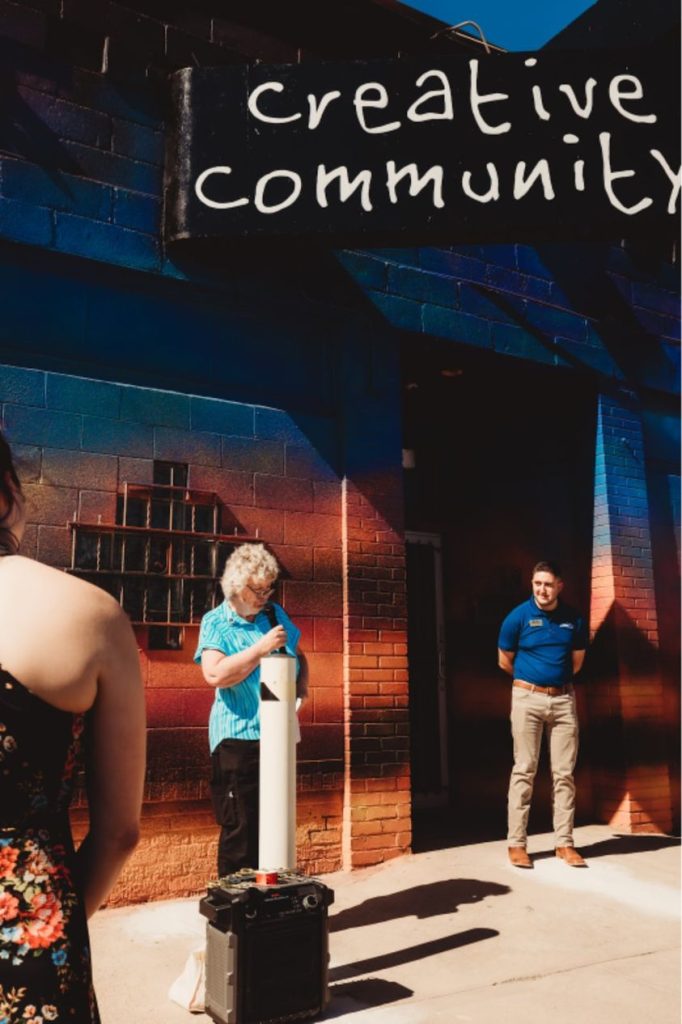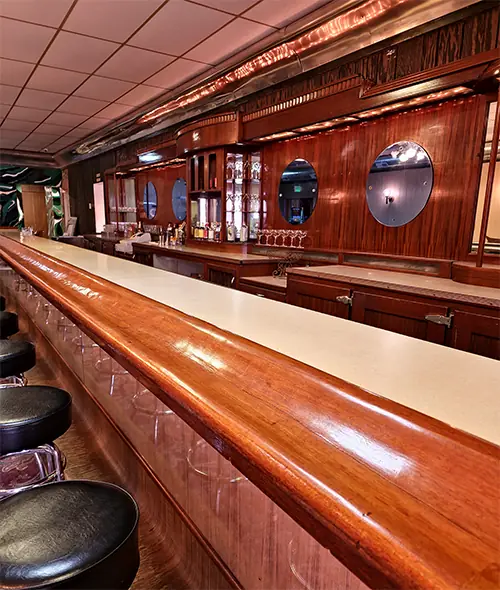
My name is Jane Fraser. I am one of the three partners of The Ethos, with Sam Derosier and Emily Gradisar. And I am pleased to welcome you here today to open our new venture.
This Ethos has two core ideas that we build on. The first is community.
This building behind me was built in 1920 and has housed Anzick’s Steak House, Strilich’s Lounge, and the Grand Prix, restaurants that fed generations of steel mill workers and their families as well as many others. The pool hall, now attached to the main building, was a community gathering place. One of the two basements was probably used to make bootleg wine; the other basement had a bowling alley. The house was home to members of the Anzick, Strilich, and Montoya families and others.
Those names reflect some of the ethnic communities of Pueblo: the Anzicks from Slovenia, the Striliches from Croatia, and the Montoyas from New Mexico.
The names and the history of this place reflect the Pueblo community but also demonstrate that Pueblo is a community made up of communities.
What is the first question two Pueblo people each other when they first meet? “What high school did you go to?” Pueblo people love to know how you fit into our communities.
From the native communities on whose land we stand, through the five countries whose flags have flown over this area, to BEGIN (The Bessemer, Eiler’s/Bojon Town, and Grove Improvement Network), we see a strong line of community. We feel a strong connection to this neighborhood and to Pueblo.
We all belong to Pueblo but we also belong to the many communities that make up this town. We want to support and build community and communities at The Ethos.
The second idea we build on is creativity.
I grew up in a paper mill town in New Jersey and after I came to Pueblo 25 years ago, it took me a while to figure out why I felt at home so quickly. I realized that Pueblo has the same ethnic blue collar diversity, the same friendly but tough welcome, and the same hands-on, “we can do this” attitude of my home town. Both towns are maker towns.
Pueblo makes steel, but we also roast coffee, we design and make jewelry, we customize hot rods, and we paint murals. We have great manufacturing companies that make carbon disk brakes for aircraft, towers for wind turbines, traction chains, rail products, custom kitchen cabinets, fruit handling equipment, bath and body products, and more. I sew.
Pueblo is a maker city, a city of makers, artists, artisans, and creatives. Creativity is the second aspect of Pueblo that we build on. We want to change the Pueblo question from What high school did you go to? To What do you make?
I am very pleased to be standing below a sign that says “creative community.” We mean for that phrase to describe The Ethos, to describe our mission, but also to describe Pueblo. This building now houses a sober bar and makerspaces. Space is available to rent for community meetings and social gatherings. We offer classes on all types of making; contact us if you want to teach a class.
‘Ethos’ means the spirit of a community or era, and we’ve had just about enough of other people telling us what Pueblo is. The time to let others define us has passed. It’s time to get to work to create the community we want.
I am very grateful to many many people who have helped us get to this day and place. I can’t thank them all so I will only thank five. I thank my two partners, Sam and Emily, and also our three guys Alex, Ben, and Mark who put up with a LOT during the last 17 months while we were renovating and upgrading the building.
And thank you to all of you for being here to help us cut the ribbon. Let’s do that!
